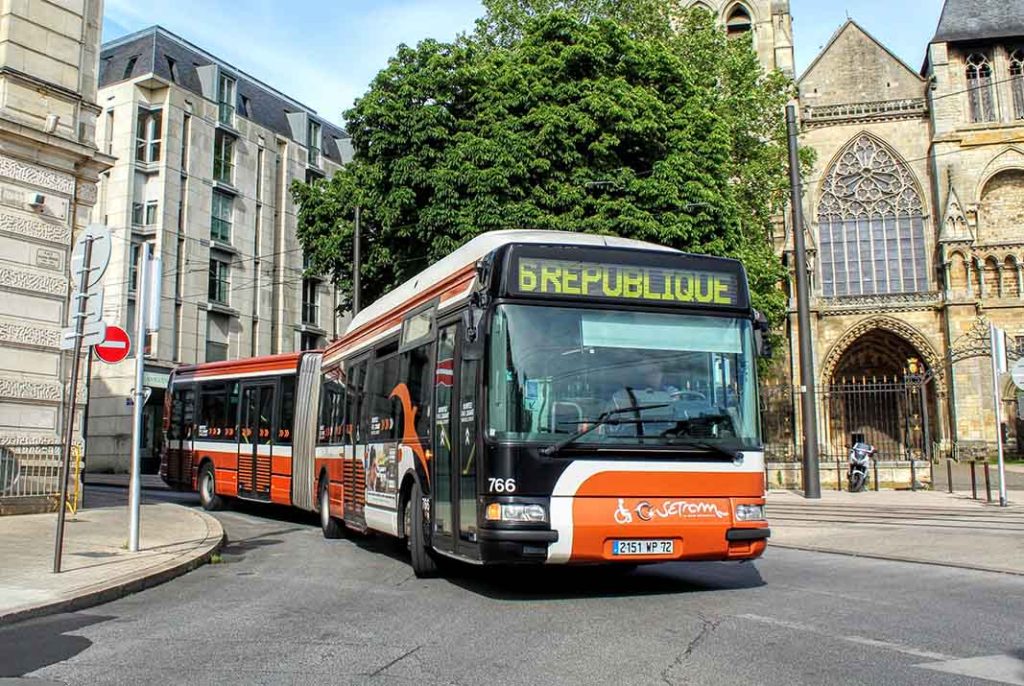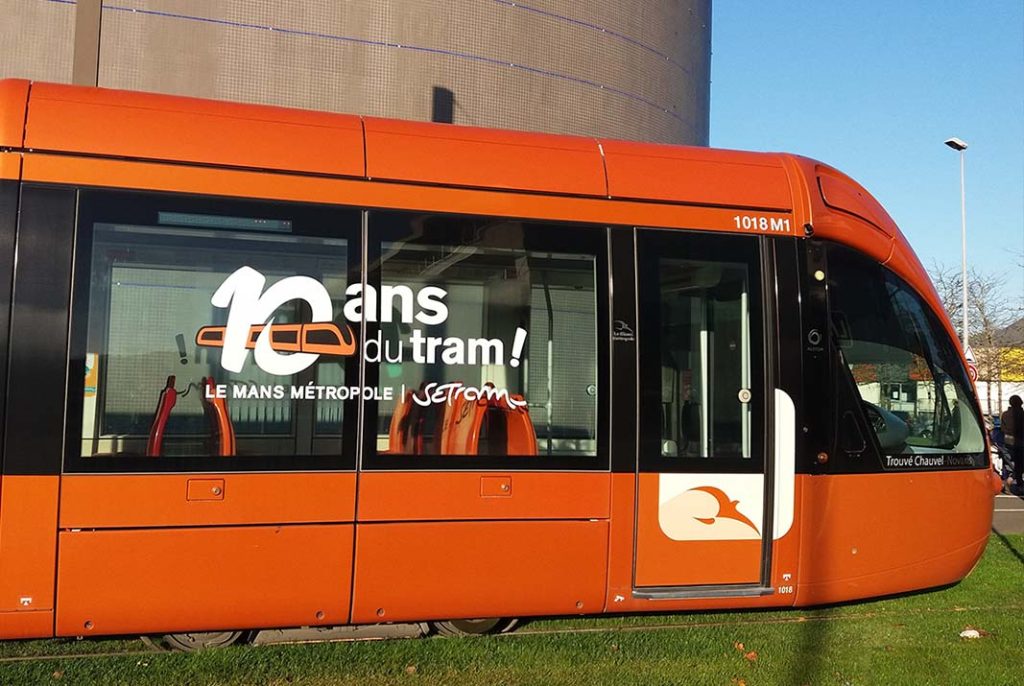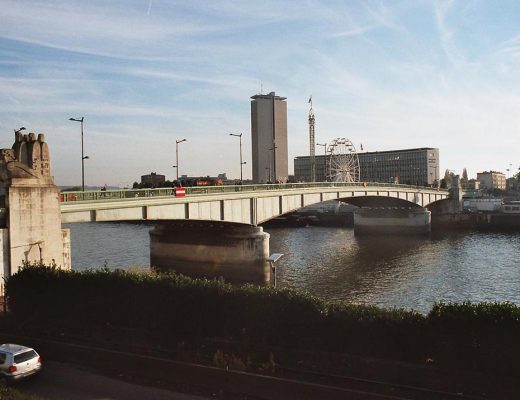When I first arrived in Le Mans, stepping out of the train from Paris into the cool French air, I thought I could simply walk everywhere. After all, the old medieval heart of the city looked compact on the map, and I was eager to explore on foot. But it didn’t take long to realize that Le Mans, while charmingly walkable in the historic district, is also a modern French city with suburbs, tramlines, and buses that weave a surprisingly efficient web across its neighborhoods.
Public transport in Le Mans is not overwhelming like in Paris, nor as limited as in smaller towns. It sits somewhere in between: organized, reliable, and perfectly suited for travelers who are willing to learn how to use it. Over the years, I’ve come to see public transport not just as a practical necessity, but as part of the travel experience itself — a way to slip into the rhythm of local life.
This guide is for first-time visitors who want to make the most of public transport in Le Mans. I’ve put together detailed advice, drawn from personal experiences — both my mistakes and my discoveries — so you can navigate with confidence.
1. Start with the Tram: The Spine of the City
The tramway of Le Mans is the beating heart of the city’s transport system. With two main lines (Line 1 and Line 2), the trams connect the north and south of the city, cutting straight through the center.
The first time I rode the tram, I boarded at Université station in the north, surrounded by students, and glided smoothly down to Antarès-MMArena in the south, where the famous 24 Hours of Le Mans race track is located. In just half an hour, I felt like I had crossed the whole city.
Tickets cost €1.50 for a single ride, valid for 1 hour across both tram and bus networks. You can buy them at machines near tram stops (bring coins or a card). For longer stays, a day pass for €4.40 or a 7-day pass for €13.20 offers far better value.
My tip: Always validate your ticket when you board. Inspectors do random checks, and fines can be steep. I once saw a group of tourists caught without validation; the fine was €50 each. It wasn’t pretty.
2. Buses Fill the Gaps
While the trams are fast and modern, the buses in Le Mans are where you’ll discover the quieter corners. The network covers suburbs, residential neighborhoods, and even areas near the Sarthe River where trams don’t reach.
I once took Bus 14 to visit a friend in Coulaines, just outside the city. The ride was simple, the views of the surrounding countryside charming, and it reminded me that Le Mans is more than its medieval core.
Bus stops are clearly marked with timetables, but I recommend downloading the SETRAM app (Le Mans’ official transport operator). It shows real-time departures, which is a lifesaver when you’re tired and just want to know if the bus is coming in two minutes or twenty.

3. Embrace Tickets and Passes Early
One of my first mistakes was buying single tickets every time I boarded. By the third day, I realized I had already spent more than the cost of a week pass.
If you’re in Le Mans for more than two days, do yourself a favor: buy a pass. The 24-hour pass (€4.40) gives you unlimited rides, which is perfect for a day of sightseeing across the city. The weekly pass (€13.20) is worth it if you’re staying longer — even if you only use it twice a day.
Tickets are valid on both trams and buses, which makes life easier. Machines at tram stops sell them in English as well as French.
4. Timing Is Everything
Le Mans’ transport system runs well, but it’s not a 24-hour service. Trams usually stop around midnight, and buses wind down earlier. On my first weekend, I stayed late at a wine bar near Place de la République. I came out expecting to catch a bus back to my Airbnb, only to realize the last one had already gone. I walked for nearly an hour through the dark streets, which was not how I had imagined ending my night.
So here’s my advice: always check the last tram or bus time for your route. The SETRAM website and app list timetables clearly. For late nights, taxis or rideshares like Bolt are available, but they’re pricier.
5. Use Public Transport for Big Attractions
Most of Le Mans’ major attractions are conveniently accessible by tram.
- Cathédrale Saint-Julien – Take Line 1 to Préfecture and walk 10 minutes.
- Cité Plantagenêt (Old Town) – Alight at République; from there, the medieval streets unfold in every direction.
- 24 Hours of Le Mans Museum – Ride Line 1 south to Antarès-MMArena; the racetrack and museum are right there.
- Jardin des Plantes – Get off at Comtes du Maine, then walk 10 minutes.
The ease of access is what I love most: no complicated transfers, no endless searching. Just hop on a tram and step into history.
For museum tickets, I recommend booking in advance through Tiqets or GetYourGuide. I booked my entry to the 24 Hours of Le Mans Museum on Tiqets for €10.50, and it saved me waiting in line.
6. Expect Crowds During Events
If you’re visiting during the 24 Hours of Le Mans race in June or other major events, prepare for packed trams. During my first race weekend, the tram from the city center to the circuit was so full that I had to wait for the next one. People squeezed in shoulder to shoulder, buzzing with excitement.
My advice: if you’re traveling during an event, buy your tickets in advance (to avoid the queues at machines) and leave earlier than you think you need to. That way, you avoid the stress and can enjoy the atmosphere instead.
7. Walking and Public Transport Go Hand in Hand
Le Mans is a city best discovered on foot, but the trams and buses connect the dots. I often rode the tram to République, then spent the whole afternoon wandering the Cité Plantagenêt. Later, tired but happy, I hopped back on a tram to return to my apartment.
Think of public transport here not as a replacement for walking, but as its partner. Use it to reach the edges of the city, then slow down and let your feet guide you.
8. Accessibility Matters
One thing I deeply appreciate is how accessible the tram system is. Platforms are level with tram doors, making it easy for wheelchairs, strollers, or heavy luggage. On buses, ramps are available.
I once watched an elderly man board with ease, the driver lowering the ramp for him. It was seamless, respectful, and it reminded me that public transport is designed for everyone. If you’re traveling with mobility needs, Le Mans won’t leave you stranded.
9. Learn the Local Etiquette
French transport etiquette is subtle but important. Always greet the driver with a polite “Bonjour” when boarding a bus. Offer your seat to elderly passengers. And never eat or drink on the tram — it’s frowned upon.
One morning, I absentmindedly carried a croissant onto the tram. A fellow passenger gave me a gentle but unmistakable look of disapproval. I tucked it away and saved it for later. Since then, I’ve followed the unspoken rules more carefully.
10. Make Technology Your Ally
As charming as paper maps are, I’ve learned to rely on apps for navigating Le Mans. The SETRAM app is indispensable for schedules, delays, and route planning. But I also use Google Maps, which integrates the tram and bus network smoothly.
For booking longer journeys — like Paris to Le Mans or day trips from the city — I always use Omio. It lets me compare trains, buses, and flights across Europe in one place. My Paris–Le Mans TGV ticket cost €35, and it was booked in under two minutes on my phone.
11. Budgeting with Transport in Mind
For students and young travelers, every euro matters. Public transport in Le Mans is affordable compared to bigger cities, but costs can creep up if you’re not careful.
My advice: budget around €15–20 per week if you plan to use trams and buses daily. Add a little extra for occasional taxis or late-night rideshares. That way, you won’t be caught off guard.
Saving on transport also means you can splurge elsewhere — like dining. I once used the money I saved on weekly passes to treat myself to a meal at Le Grenier à Sel (26 Rue du Docteur Leroy). I booked through LaFourchette (TheFork) and scored a discount. A three-course dinner with wine cost under €30 — not bad for fine dining in France.
12. Combine Transport with Accommodation Choices
Where you stay in Le Mans influences how much you’ll use public transport. If you choose a hotel near the cathedral, you’ll walk most of the time. If you’re near the station, trams and buses will be your lifeline.
For bookings, I use Booking.com for hotels and Airbnb for apartments. On one trip, I stayed in a modern apartment near Université tram stop for €68 per night on Airbnb. The tram carried me downtown in 15 minutes, and I had the quiet of a student neighborhood.
The key is balance: central locations mean higher costs, but fewer tram rides; suburbs are cheaper, but you’ll rely more on public transport.
13. Be Ready for Strikes or Delays
France is famous for strikes, and Le Mans is no exception. During one visit, I arrived at a tram stop to find hand-written signs announcing a strike. I ended up walking across half the city that day.
It wasn’t a disaster — I discovered charming streets I might never have seen otherwise — but it taught me a lesson: always check local news or the SETRAM website before a big day of travel. If there’s a strike, adjust your plans.

14. Think Beyond the City
Le Mans’ trams and buses are excellent, but they don’t cover nearby towns. For day trips, you’ll rely on regional trains. The station is central, and trains can take you to Angers, Tours, or even back to Paris quickly.
I recommend booking through SNCF Connect (France’s official site) or Omio. Prices vary, but if you book early, a return trip to Angers can cost as little as €20.
Moving with the City
What I love about using public transport in Le Mans is how it shapes your experience. You see students chatting in groups, workers commuting quietly, families heading to the park. You’re not isolated in a taxi; you’re part of the daily rhythm.
September mornings are my favorite: the tram full of people heading to school or work, the sun rising over the rooftops, the sense of a city waking up. It’s in these small, ordinary moments that I feel closest to the soul of Le Mans.
For first-time visitors, my advice is simple: don’t be intimidated. The trams and buses are your friends. Buy a pass, download the apps, greet your driver, and ride with confidence. Public transport will not only take you where you need to go, but also let you live the city as locals do.
And when your day of exploration ends, and you step off the tram at République, with the cathedral glowing in the twilight, you’ll realize: public transport isn’t just about moving through Le Mans. It’s about belonging, if only for a little while.



